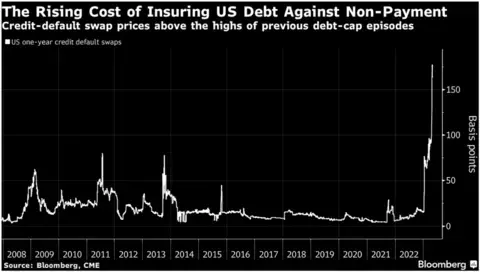Treasury Secretary Janet Yellen recently stated that we may hit the debt ceiling as soon as June 1. Although we were warned earlier this year, concerns of a possible default are appearing prominently in financial media headlines as the deadline approaches.
What Is the Debt Ceiling?
The debt ceiling is the statutory limit on the Treasury’s ability to issue new federal debt—meaning it’s a limit to how much the government is allowed to borrow to meet its existing legal obligations. The government instituted a debt ceiling in 1917 as part of the Second Liberty Bond Act to help fund the U.S. contribution to World War I. Since this time, the debt limit has been suspended or raised over 100 times.
Take the first step towards financial security. Click here to schedule your free consultation with our experienced advisors.
Why Is the Debt Ceiling an Issue?
Without authorization to issue more debt, the Treasury may run short of funds to make payments on behalf of the government. They would run the risk of making delayed payments or even defaulting on obligations, including previously issued Treasury securities.
We reached the federal debt limit of $31.4 trillion earlier this year. At that time, Yellen announced “extraordinary measures” would need to be taken to pay its bills.
While failure to raise the debt ceiling could have catastrophic consequences for the economy, it’s important to note that we’ve been down this road before. History can be our guide and we highlight two recent years when the debt ceiling was at the forefront of market concerns:
- The debt ceiling became an issue in 2011, leading Standard & Poor’s to downgrade the federal debt and reduce the country’s credit rating for the first time in U.S. history.
- In 2013, tense negotiations over the debt ceiling brought the country to within days of default. Since then, the debt ceiling has been raised or suspended without much controversy.
What the Debt Ceiling Means to Markets
As the June 1 deadline approaches, market concerns are elevated, as seen by the rising cost of insuring debt shown in Figure 1 below.
Figure 1. The Rising Cost of Insuring U.S. Debt Against Non-Payment

If political leaders begin working on potential solutions, markets would largely ignore the posturing and resume focus on recession risk, inflation, and the Federal Reserve’s next moves on interest rates. Short-term extensions would not be ideal, but they would provide additional time for Congress to act.
Without authorization to issue more debt, the Treasury may run short of funds to make payments on behalf of the government. The concern then is that payments would be delayed or the government could technically default on its obligations, including previously issued Treasury securities.
In 1979 a debt ceiling resolution was followed by a brief delay in some payments by the Treasury. This caused T-bill interest rates to rise 0.6%, adding to the cost of the federal government’s interest payments.
However, in 2011, when the U.S. debt was downgraded, yields actually declined.
There are additional measures that the administration could take to continue paying its bills. An option that was considered in 2011 was for the U.S. to use its available resources to make payments to investors holding U.S. debt while foregoing payments to Social Security recipients, military contractors, and others. The administration could also issue some short-term, high-interest-rate bonds to extend the period for Congress to reach a deal.
In the near term, a threat to the creditworthiness of federal debt could precipitate downside volatility in stock markets, a rise in Treasury rates, and a weaker U.S. dollar.
Money market funds that only own Treasuries could also face volatility, and investors are already shunning some T-bills that mature around the expected time of default. There is concern that money market funds that face rapid withdrawals could force managers to sell, creating losses and “breaking the buck,” thus falling below the fund's $1 Net Asset Value (NAV).
Eventually, market stress is likely to pressure Congress to act, and they will likely suspend the debt ceiling for a period of time to get back to negotiating the fiscal budget.
Let's secure your financial future together. Schedule a free session with an experienced advisor today.
What It All Means
Although investor concern regarding the debt ceiling is mounting, we expect the ensuing near-term volatility will abate over the long term, as they have in past negotiations around this issue. If this time truly is different, markets could become even more volatile, which we believe could present an opportunity for investors with longer-term time horizons.

